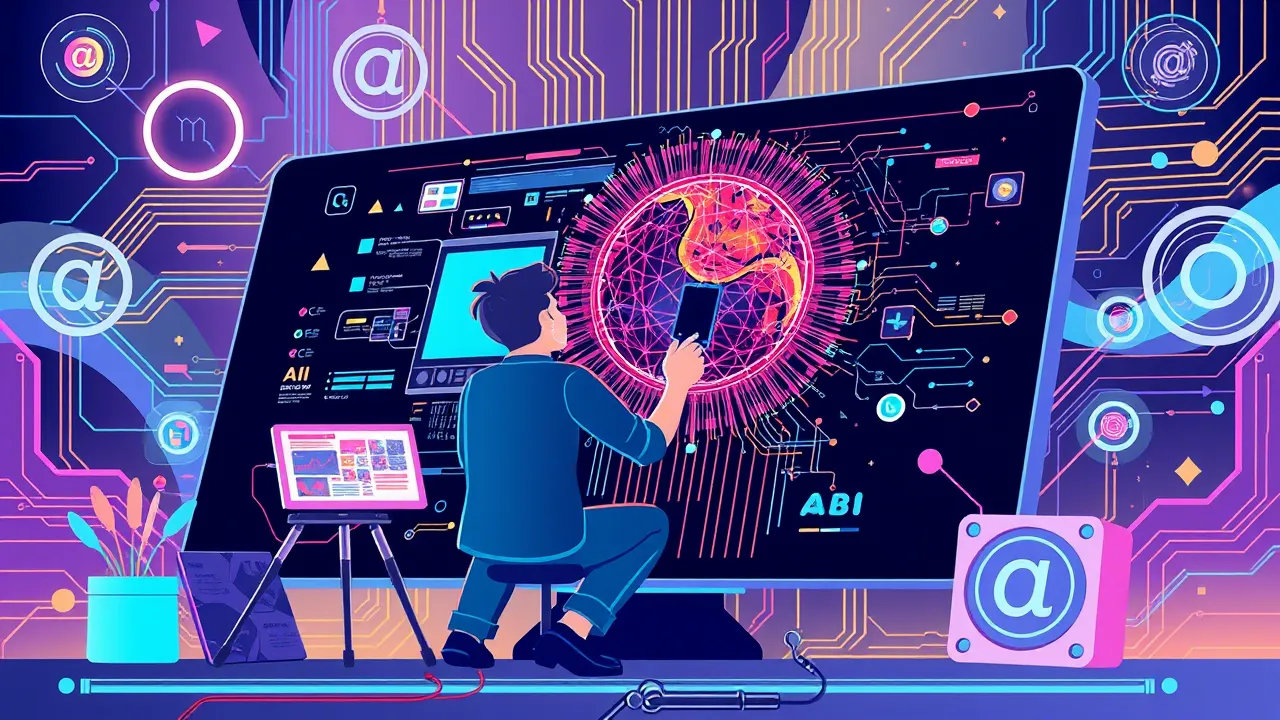By 2025, artificial intelligence has ceased to be an exotic tool in the hands of a few enthusiasts and has transformed into a powerful force actively reshaping creative industries. From image and music generation to text writing and video creation, AI and creativity are inextricably linked today, sparking both excitement for new possibilities and intense debates about the future of art and the human role within it.
Modern AI Tools and Their Creative Applications
Modern AI tools, such as advanced versions of DALL-E 2, Midjourney, Stable Diffusion, video generators like Sora and KlingAI, and AI-based music composers, offer artists, designers, musicians, and writers unprecedented capabilities. Artists use AI to create concept art, unique visual styles, and even complete paintings. Musicians experiment with AI composers to find new melodies or generate complex arrangements. Writers find AI helpful for brainstorming, drafting, or overcoming creative blocks. In game development, AI assists in asset creation, procedural world generation, and non-player character behavior.
The "Human + AI" Interaction Model
The "human + AI" interaction model is becoming dominant. AI rarely acts as a fully autonomous creator; more often, it serves as a powerful tool, a muse, or even a co-author. The creative process transforms into an iterative collaboration: humans set the direction, provide ideas, and correct and select AI-generated results. This allows for the creation of works that would be unimaginable without such symbiosis, opening new horizons for artistic self-expression.
Copyright Issues in the Age of AI
However, one of the most complex and debated issues remains copyright. Can works created entirely or significantly by AI be subject to copyright? Who is the author – the AI developer, the user who provided the prompt, or the AI itself? As of 2025, legislation in most countries is still trying to catch up with technological progress, and there is no single answer. Legal precedents are emerging but often conflict. The issue of using copyrighted works to train AI models is particularly acute, sparking protests from many authors and rights holders. AI platforms and creators are seeking compromises, offering licensing models, watermarks, or options for authors to prohibit the use of their works for training.
Ethical Dilemmas and Challenges of Generative AI
Beyond copyright, other ethical dilemmas exist. How can authenticity and originality be ensured in an era where AI can imitate any style? The threat of deepfakes and malicious use of generative AI to create disinformation or forgeries in creative contexts is real. There is also a concern that widespread use of similar AI tools could lead to the homogenization of art, averaging out styles. And, of course, how do we value human labor and skill when AI can produce superficially similar results in seconds?
The Future of Art with AI: Evolution and New Horizons
Despite the challenges, the future of art with AI appears more evolutionary than revolutionarily destructive. AI will likely continue to democratize creativity, making tools for self-expression accessible to a wider range of people. The very definition of "artist" and "artwork" may change. New creative professions related to AI management, AI content curation, or hybrid art forms may emerge. However, human vision, emotion, unique life experience, and the profound intent behind a work will remain irreplaceable.
Conclusion: AI and Creativity – The Path Forward
Ultimately, AI and creativity form a dynamic tandem fraught with opportunities and risks. The path forward lies in the conscious use of technology, the development of ethical frameworks and legal regulations, and an ongoing dialogue among developers, artists, and society about what we want the future of art to look like in this new era.
